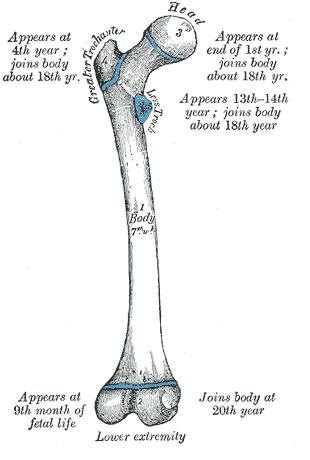Researchers have used nanotechnology to grow denser bone tissue by inserting rod-like nanoparticles into the pores of a chemical used as a bone template

In a first-of-its-kind study, bioengineers and bioscientists at Rice University and in the US at Radboud University in the Netherlands have shown that they are able to grow denser bone tissue by inserting rod-like nanoparticles into the pores of a chemical substance used as a bone template.
This is the latest breakthrough in the rapidly developing field of tissue engineering. The new field incorporates the latest research in materials science and biomedical engineering in order to produce tissues that can be transplanted without the risk of rejection by the body. In order to grow new bone, tissue engineers usually place bone cells in porous and biodegradable materials in the body called "scaffolds" that are used as templates for growth. Given the appropriate chemical or physical signal, the cells begin to form new bone. The mold breaks down over time and a new bone replaces it.
"Ideally, the scaffold should be highly porous, non-toxic to the body and decompose within it over time, but also strong enough to carry the structural load of the bone that will eventually be replaced," explains lead researcher Antonios Mikos. "Although a previous study showed that carbon nanotubes provide additional mechanical strength to polymeric scaffolds, this is the first study that examined the performance of these materials in a model of a BAH."
In the experiments, the researchers implanted two types of scaffolds into rabbits. One type consisted of a biodegradable plastic called poly(propylene fumarate,PPF) which had been effective in previous experiments. The second type consisted of 99.5% of PPF and 0.5% of single-walled carbon nanotubes. While normally the nanotubes are a thousand times longer than their diameter, the researchers actually used short segments that worked effectively in the past and were more suitable. Half of the samples were tested after four weeks from the moment of implantation and half after 12 weeks.
While there was no significant difference for the four-week period, after 12 weeks the composite containing the nanotubes showed a bone growth rate that was three times higher than the type containing PPF alone. Moreover, the researchers discovered that after 12 weeks the scaffolds that contained nanotubes contained two-thirds of the bone tissue relative to the natural tissue in their surroundings, while the scaffold that was composed of PPF alone contained one-fifth of this amount.
The lead researcher says the nanocomposites performed better than expected. In fact, the results indicate that they serve as more than passive aligners and have an active role in promoting bone growth. "We still do not understand the exact mechanism of this improved bone growth, but we are planning extensive experiments for this purpose," says the researcher. "The result can be due to changes in surface chemistry, structural strength or other factors."

One response
Because of my children and for my children in the alliance, and my beloved nursery school.
I swear in the name of the supreme weighty purpose that I am a sturdy creature.